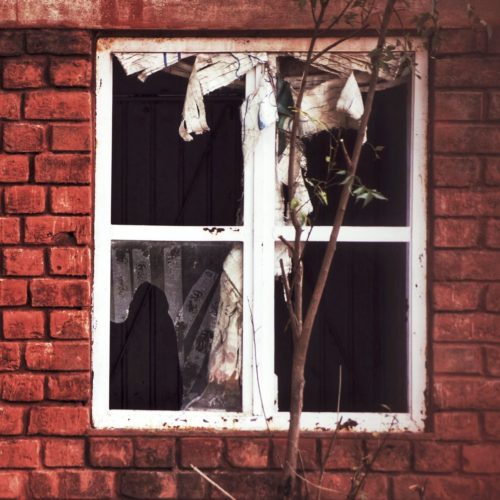Software-enforced obsolescence undermines Microsoft’s sustainability credentials
This article is the first in a two-part series co-authored with Tamsir Fayer, VP & CMO of Softcorner.
With the COP26 agreement in place, now is the time for everyone, including IT departments, to do their part in addressing the climate emergency. At a global level this will be best achieved by consuming less, a cornerstone of the movement to establish circular economies in industries worldwide.
However, our best intentions are threatened by software updates and upgrades, such as the recently released Windows 11, obsoleting otherwise serviceable hardware. Furthermore, the shift of software consumption from perpetual software to software-as-a-service also impacts sustainability goals, relying as it does on the rapidly growing and resource-intensive public cloud datacenters. In part 1 of this article series we explore software-driven obsolescence and how growing cloud usage is not always good for the environment.
The impact of Windows 11 on Sustainable IT
The release of Windows 11 coincided with COP26. However, it feels out of step with the current worldwide focus on sustainable solutions to common problems. It’s also out of step with the public face Microsoft displayed as COP26 Principal Partner.
worldwide focus on sustainable solutions to common problems. It’s also out of step with the public face Microsoft displayed as COP26 Principal Partner.
Why? Simply because Windows 11 brings with it significant new hardware requirements. Many business laptops & PCs built prior to 2018 aren’t compatible with Windows 11. That’s only three years ago. Many of those laptops will still be in warranty and should be perfectly viable as business computing devices for several years yet. Only a small subset of “power-users” require the latest Core i9 laptop with 32GB of RAM and a 2TB SSD drive.
This is something we already know as IT Asset Managers when we assess application requirements. When we think about common business applications – Outlook, Excel, Word, etc – have they materially changed since the launch of Office 2010 11 years ago? Undoubtedly there are many extra features, but how many average users need them, and therefore need a machine capable of running the newest versions?
The same applies to the operating system. Windows 7 was a highly capable and popular business operating system. It was fast, easily managed, and had low hardware requirements. Importantly for avoiding software-driven obsolescence, it did not mandate software updates nor require connections to cloud services.
Given the choice, would organisations be looking to replace it? Rolling out a new OS is a big undertaking, and what do you get at the end of it? A new user experience, which creates training and usability issues, and a large bill for the cost of replacing all the hardware which doesn’t meet Microsoft’s hardware requirements. Most important of all, however, is that 70% of the lifetime environmental impact of hardware is concentrated in its production. Whilst initiatives such as ePeat, EnergyStar and automated power management are laudable and do contribute to reducing the environmental impact of technology when it’s in use, by far and away the best solution is to sweat assets for as long as possible, and then to not buy net-new assets.
Software-enforced obsolescence
Microsoft enforce hardware obsolescence via two methods. Firstly, they end support for the existing operating system. In the case of Windows 7, the End-of-Life date was 14/01/2020. After that date vital automated security updates ceased, making it complex for organisations to continue to run Windows 7 in sensitive environments with regulatory requirements relating to security patching. Whilst organisations can pay for Extended Security Updates to continue to receive automated security updates for a further 3 years – this is prohibitively expensive, with the cost doubling each year.
In this way, Microsoft actively disincentivises organisations from remaining on old but perfectly serviceable technology and gets paid for doing so. The primary justification for this is that older platforms and software are no longer secure in the face of modern threats but is it right that Microsoft should benefit financially from defects in their own products? Is there any other business which runs this way? Imagine the reaction if Volkswagen or BMW increased servicing and parts costs for vehicles over ten years old or told drivers that their car was no longer safe to drive.
Secondly, in the case of Windows 11, Microsoft have also enforced obsolescence via new requirements for the Trusted Platform Module (TPM) and other hardware-supplied security requirements such as Virtualization Based Security. The TPM is physical hardware used for a variety of low-level security tasks, ensuring that the underlying hardware is secure. For example, it’s used for BitLocker encryption and Windows login services. Windows 11 requires TPM 2.0 which Microsoft claims should be available on most machines built since 2016. In the consumer world, 2016 may seem a long time ago (it’s when the iPhone 7 launched, for example) but at that time I was working at an organisation which had only just started an XP/Vista to Windows 7 hardware refresh. They were doing these using Windows 8 devices, downgraded to Windows 7 because they didn’t want the overhead of training everyone to use Windows 8. Most of those machines now won’t be able to run Windows 11. A laptop built ten years ago will still run ten-year-old software perfectly well, and for most users in most organisations that will be all they need. Unfortunately, Microsoft’s accelerated software lifecycle – the days of 5+5 years of mainstream and extended support are over – and focus on pushing customers to cloud solutions disincentivises companies from using old software and hardware.
To be completely fair, this isn’t just a Microsoft problem. In 2012 Adobe forced most users to switch to Creative Cloud and stopped selling or updating standalone versions of most of their products. Subscriptions provide continuous and predictable revenue for software companies and are popular with their investors – Adobe’s share price is 20 times higher today than it was in 2012. Their revenue has trebled over the same period – all driven by subscriptions. Many other software vendors are following suit, requiring subscription users to upgrade via auto-update, with major updates often increasing hardware requirements and driving early and unnecessary client hardware upgrades.
The hidden environmental cost of subscription software
Now, you may be thinking that the environmental impact of software is much lower than that of hardware. That’s not entirely the case however, and the reason is that SaaS subscription software relies on cloud computing.
Currently, cloud computing is leading a datacentre building boom. This is highly problematic because building construction & operation accounts for 40% of annual global carbon emissions, largely due to the resource-intensive nature of concrete and steel production. Such concerns led Amsterdam to recently enforce a moratorium on new datacentre construction until the environmental impact on the city was better understood.
The environmental cost of building a new hyperscale datacentre was investigated by independent consultants on behalf of Serverfarm, a datacentre operating company. They estimated that rebuilding Serverfarm’s 150,000 sq. ft Chicago datacentre would produce almost 9.5m kilogrammes of CO2 equivalence. Alternatively, re-use and refurbishment of an existing facility of the same size would cut that figure by 88%. In keeping with the circular economy mantra that the most sustainable option is always to avoid taking new resources, the greenest and most sustainable datacentre is therefore the one that never gets built.
Conclusion
In this article we’ve outlined how software drives hardware obsolescence, particularly at the operating system level, and that cloud computing also has a significant impact on sustainability. What can be done about this? What role can ITAM Managers play? We’ll explore that in the next article in this series.
Can’t find what you’re looking for?
More from ITAM News & Analysis
-
Broadcom vs Siemens AG - A Brewing Storm
The ongoing legal battle between VMware (under Broadcom ownership) and Siemens is yet another example of why ITAM goes far beyond license compliance and SAM. What might, at first glance, appear to be a licensing dispute, ... -
Shifting Left Together: Embedding ITAM into FinOps Culture
During one of the keynotes at the FinOps X conference in San Diego, JR Storment, Executive Director of the FinOps Foundation, interviewed a senior executive from Salesforce. They discussed the idea of combining the roles of ... -
Addressing the SaaS Data Gap in FinOps FOCUS 2.1
I recently reported on the FinOps Foundation’s inclusion of SaaS and Datacenter in its expanded Cloud+ scope. At that time, I highlighted concerns about getting the myriad SaaS companies to supply FOCUS-compliant billing data. A couple ...
Podcast
ITAM training
Similar Posts
-
Microsoft Visual Studio Licensing Guide: Reduce Risks
(This article was reviewed and updated on 3 July 2025) Visual Studio Licensing Visual Studio subscriptions are licensed Per User with each licensed user able to. “install and use the software on any number of device”. ... -
Broadcom vs Siemens AG - A Brewing Storm
The ongoing legal battle between VMware (under Broadcom ownership) and Siemens is yet another example of why ITAM goes far beyond license compliance and SAM. What might, at first glance, appear to be a licensing dispute, ... -
Microsoft Power Apps: Current Pricing Models Comparison
Back in November 2021, Microsoft made Power Apps available under the pay-as-you-go (PAYG) model, alongside the traditional Per User/Per App options. This PAYG model has gained popularity. It ensures simple rightsizing for Power Apps environments. Here, ... -
Microsoft Q3 Soars as AI and Azure Growth Fuels Market Gains
On the 30th April, Microsoft released its Q3 quarterly earnings report, exceeding expectations and igniting investor optimism. Investors had been keeping a watchful eye on Azure’s Cloud performance after Microsoft’s Q2 Cloud results fell short of ...




